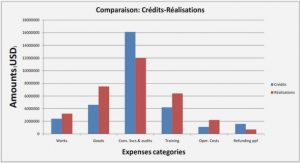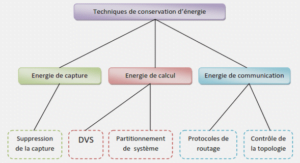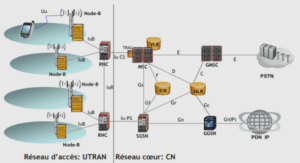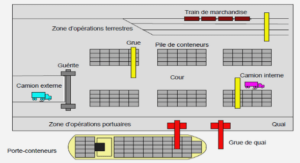Characterisation of plasma by optical emission spectroscopy
Fundamental interactions between surfaces and biomolecules
Depending on the application, attachment of biomolecules to the material is either favoured or needs to be prevented. The adhesion of various microorganisms or proteins can occur on most of the surfaces, including metals and alloys, glass, polymer materials with hydrophilic character or most inert hydrophobic surfaces like PTFE [19]. There is a limited knowledge on what is going on the interface of living and non-living matter. The exact mechanism of adsorption to surfaces is not completely understood yet and remains a key question in many studies [20].
For certain biomaterials like contact lenses, biosensors, microfluidic devices, patterned supports for tissue engineering, analytic or storage materials, various devices in contact with blood (vascular grafts, catheters and dialysers) it is very important to avoid the unspecific protein adsorption. Proteins naturally adsorb on the foreign surfaces and significantly modify their characteristics. For example the adsorption of blood proteins to devices like vascular grafts triggers the thrombosis and consequently the clothing of vessel [21].
The proteins can be adsorbed through many different mechanisms due to their complex nature; therefore the control of their adsorption is very difficult to achieve [22]. It was proposed that the low adhesion materials should be either super hydrophilic or super hydrophobic in order to be protein repellent [23]. The creation of surfaces with hydrophilic surfaces is thought to strongly adsorb water. This high content of water present on the surface should provide minimal surface tension in contact with biological containing liquids due to its similarity. On the other hand extremely hydrophobic surfaces would repel the water and by this keeping the minimal contact of liquid containing biomolecules with the surface [chatpfe.com].
Coating of surfaces with non- charged hydrophilic polymers like Polyethylene glycol (PEG), Poly(methyl methacrylate) (PMMA), Poly(ethylene oxide) (PEO) have been found to reduce the protein and cell adsorption due to the elimination of electrostatic forces and the hydrophobic interactions between surface and proteins in solutions [24-26].
These kinds of coatings showed very promising results for the devices that are used in short to medium time use (dialysis), however the performance of grafted implant surfaces (cardiovascular grafts) in longer times still remains questionable due to their loss of performance. For example hydrophobically modified polymers exhibit little interaction with blood platelets and therefore they are often used for different application where the thrombosis effects need to be reduced (polyester terephtalate (Dacron) grafts- synthetic material used to replace normal body tissues) [27]. The non-fouling surfaces and protein surface interactions will be examined more in details in the chapter 1.4.
For certain materials it is important that they present antibacterial properties, because the bacteria’s and cells compete for the adhesion to the implants and tissues. The bacterial attachment is mainly driven through the adhesion of microorganisms on surfaces with subsequent colonization of exposed surface. Two main paths are taken in order to avoid the bacterial adhesion. First is through development of surfaces with antimicrobial properties through implementation of ions like Cu or Ar [28] or through coating of material with non- fouling surface layers like PEOFor various implant materials the growth of cells on the surface needs to be promoted. The growing of cells is favoured on the surfaces that exhibit moderate energy and contain polar functional groups. Various oxygen deposited films exhibit rapid cell growth while nitrogen containing species exhibit high affinity for serum fibronectin and moderate influence on cell growth [30]. Another approach that is often used for implant devices is the immobilization of biological molecules like collagen or fibronectin. In natural environment cells grow on the extra cellular matrix (ECM) consisted of different proteins and polysaccharides. Therefore the modification of synthetic materials is directed in the creating of surfaces having similar composition as ECM
Another problem with implantable materials is the releasing of toxic components to the system (Ni from NiTi alloys, polymer with the catalyst residues, etc…). Modification of these surfaces with plasma has shown to be satisfactory in preventing the leakage of toxic materials to the blood. In addition these coatings are able to prevent the corrosion of implants [32]. So called slippery surfaces are prepared normally by using the extremely hydrophilic glycoprotein’s that are able to produce very viscous substances. These kinds of surfaces are used for devices in order to have less painful insertion, precise operation and protection of the tissue for injuries [33]. Flexible polymer materials are needed for the artificial ligaments, inter vertebral discs and tendons where strong adhesion to the bones is needed. These are usually phosphate based graft chains that are able to form strong bonds with Hydroxylapatite (HA) that is the main inorganic component of bone tissues [34].
In detection diagnostics techniques, biochips or other analytic supports can be functionalized for highly specific antigen recognition with low non-specific interactions. For example the polystyrene support was treated by gamma irradiation, coated with allyldextran, followed by NaIO4 chemistry in order to functionalize the dextran layer. In the next step streptavidin or neutravidin was coupled. This kind of surface shows extremely high hydrophilicity with low non- specific interactions and high binding to biotin-modified antibody or antigen [35]. On the other hand the grafting of physiologically active surfaces like polyacrylamide (PAAm,) or poly (acrylic acid) (PAAc) have drawn much attention for specific binding of biologically active molecules like DNA and pathogenic proteins from the blood. These kinds of surfaces can be also referred to as immuno adsorbant surfaces [36].
The development of stimuli-responsive polymers is another broad area that is attracting much interest in the last years. These materials are able to respond to external stimuli such as temperature, pH, light, electric field, chemicals and ionic strength. The responses are shown as dramatic changes in shape, surface characteristics, solubility, formation of an intricate molecular self-assembly or a sol-gel transition. Applications of stimuli-responsive or so called ‘smart’ polymers are found often in delivery of therapeutics, tissue engineering, bioseparations and sensors [37, 38]. Coatings that are most usually used as stimuli-responsive polymers are Poly (N-isopropylacrylamide) (PNIPAM) and PNIPAM based copolymers, poly (ethylene glycol) (PEG)–poly (lacticco- glycolic acid) (PLGA) copolymers, Poly(acrylic acid) (PAAc), Poly(methacrylic acid) (PMAA) and poly(ethylene imine) (PEI) [chatpfe.com].
Techniques for modification of biomaterials
In order to develop an appropriate material for specific applications their surfaces need to be modified/functionalized by either physical or chemical modification and in some cases the combination of both methods can be applied. The methods based on physisorption of macromolecules have a deficiency; the layers formed on the surface of the substrate are bonded solely through relatively weak forces, like electrostatic, hydrogen and van der Walls bonds. For many biomedical applications, materials with long- term survival and stable coatings with no depletion are necessary. For this reason the use of physisorbed layers for in-vivo and in-vitro conditions is limited and the chemical methods for covalent binding of materials are favoured.
|
1 Introduction
1.1 Design of novel biomaterials
1.1.1 What are biomaterials?
1.1.2 Fundamental interactions between surfaces and biomolecules
1.1.3 Techniques for modification of biomaterials
1.2 Biomaterial elaboration through one step plasma functionalization
1.2.1 Plasma state
1.2.1.1 Non-equilibrium “cold” plasma
1.2.2 Plasma-surface interactions
1.2.3 Applications of low pressure non-equilibrium plasmas
1.2.3.1 Development of (super) hydrophobic surfaces
1.2.3.2 Development of (super) hydrophilic surfaces
1.3 Biomaterial elaboration through two-step treatment: Surface activation and polymer grafting
1.3.1 Grafting of polymer brushes
1.3.1.1 “Grafting to” and “grafting from” methods
1.3.1.2 Homopolymer brushes
1.3.1.3 Mixed polymer and copolymer brushes
1.3.2 Grafting of surfactants
1.3.3 Grafting of particular thermo-sensitive polymer: PNIPAM
1.4 Proteins and surfaces
1.4.1 Protein-surface interactions
1.4.1.1 Protein structure and properties
1.4.1.2 Influence of surface hydrophobicity and hydrophilicity on adsorption
1.4.1.3 Influence of charge on adsorption
1.4.1.4 Influence of surface topography and roughness on adsorption
1.4.1.5 Protein adsorption from multi-component solutions
1.4.2 Protein resistant surfaces
1.4.3 Physicochemical properties of specific proteins: prion protein, Tau and α- synuclein
1.5 Summary and outlook
2 Experimental part
2.1 Functionalization of supports
2.1.1 Plasma treatment
2.1.2 Preparation of immersion solutions
2.1.3 Surface grafting
2.2 Characterisation of plasma by optical emission spectroscopy (OES)
2.3 Surface characterisation
2.3.1 Surface grafting
2.3.2 X-ray photoelectron spectroscopy (XPS)
2.3.3 Zeta potential measurements
2.3.4 Atomic force spectroscopy (AFM
2.3.5 Confocal microscopy
2.4 Biological validation of Eppendorf tubes by ELISA tests
2.4.1 ELISA protocols for detection of different neurodegenerative agents
2.4.1.1 Direct and “sandwich” ELISA protocol for detection of PrPrechum
2.4.1.2 “Sandwich” ELISA protocol for detection of PrPc from CSF
2.4.1.3 “Sandwich” ELISA protocol for detection of Taurec
2.4.1.4 “Sandwich” ELISA protocol for detection of TauPHF from CSF
2.4.1.5 “Sandwich” ELISA protocol for detection of Tautot from CSF
2.4.1.6 “Sandwich” ELISA protocol for detection of Aβ-42 from CSF
2.4.1.7 “Sandwich” ELISA protocol for detection of α-syn
3 Results and discussion: Surface modification and analyses
3.1 Hydrophobic modification of polymeric surfaces through one-step CF4 plasma treatment
3.1.1 Characterization of the plasma phase
3.1.2 Characterization of modified surfaces; determination of the hydrophobic properties
3.1.2.1 Influence of discharge power on the wettability of modified surfaces
3.1.2.2 Influence of pressure on the wettability of modified surfaces
3.1.2.3 Influence of treatment time on the wettability of modified surfaces
3.1.2.4 Ageing effects on the plasma-fluorinated surfaces
3.1.3 Characterization of the chemical composition of modified surfaces
3.1.3.1 Influence of treatment time on the surface chemistry
3.1.3.2 Influence of discharge power on the surface chemistry
3.1.3.3 Influence of pressure on the surface chemistry
3.1.4 Characterization of the surface charge of plasma-fluorinated surfaces
3.1.5 Characterization of the surface morphology
3.2 Hydrophilic modification of polymers through two-step treatment: Plasma activation and polymer grafting
3.2.1 Fist step: Activation of substrates by helium plasma
3.2.1.1 Helium plasma characterization
3.2.1.2 Characterisation of the activated surface, determination of hydrophilic properties
3.2.1.2.1 Influence of pressure on the wettability of modified surfaces
3.2.1.2.2 Influence of discharge power on the wettability of modified surfaces
3.2.1.2.3 Influence of treatment time on the wettability of modified surfaces
3.2.1.2.4 Ageing effects on the plasma-activated surfaces
3.2.1.3 Characterisation of the activated surface, determination of hydrophilic properties
3.2.1.3.1 Influence of treatment time on the surface chemistry
3.2.1.3.2 Influence of discharge power on the surface chemistry
3.2.1.3.3 Influence of pressure on the surface chemistry
3.2.2 Polymer grafting onto plasma-activated surface
3.2.2.1 Characterisation of the modified surfaces, determination of the hydrophilic properties
3.2.2.1.1 Grafting of PNIPAM
3.2.2.1.1.1Optimisation of grafting parameters
3.2.2.1.1.2Influence of plasma treatment time on PNIPAM grafting
3.2.2.1.2 Grafting of MIX I
3.2.2.1.2.1Optimisation of grafting parameters
3.2.2.1.2.2Influence of plasma treatment time on MIX I grafting
3.2.2.1.3 Grafting of MIX II
3.2.2.1.3.1Optimisation of grafting parameters
3.2.2.1.3.2Influence of plasma treatment time on MIX I grafting
3.2.2.1.4 Ageing of grafted samples
3.2.3 Characterisation of the chemical composition of grafted surfaces
3.2.3.1 Grafting of PNIPAM
3.2.3.2 Grafting of MIX I
3.2.3.3 Grafting of MIX II
3.2.4 Characterisation of the surface charge of grafted surfaces
3.2.5 Characterisation of the surface morphology
3.2.5.1 Surface morphology of PNIPAM
3.2.5.2 Surface morphology of MIX I
3.2.5.3 Surface morphology of MIX II
3.2.6 Conclusions
4 Protein adsorption study and biological validation of modified supports
4.1 Evaluation of the non-fouling properties of treated supports by direct and “sandwich” ELISA tests
4.1.1 Evaluation of the non-fouling properties of treated supports by direct and “sandwich” ELISA tests during the storage of recombinant proteins: PrPrechum, Taurec and α-syn
4.1.2 Evaluation of the non-fouling properties of treated supports by direct and “sandwich” ELISA tests during the storage of proteins from CSF: TauPHF, Tautot and Aβ-42
4.2 Evaluation of the non-fouling properties of treated supports by physicochemical characterization of surfaces after protein contact
4.2.1 Chemical characterization of treated surfaces exposed to protein solution
4.2.2 Visualization of surfaces exposed to protein solution
4.3 Influence of storage conditions on protein adsorption
4.3.1 Influence of concentration, time and temperature of storage on adsorption of PrPrechum to hydrophobically modified surfaces
4.3.2 Influence of time and temperature of storage on adsorption of α-syn to modified surfaces
4.3.3 Influence of the pH of storage buffer solutions on adsorption of PrPrechum and Taurec on modified surfaces
4.4 Influence of surface properties on the protein adsorption
4.4.1 Influence of surfactant to polymer ratio and plasma conditions on recovery of PrPrechum
4.4.2 Influence of surfactant to polymer ratio and plasma conditions on recovery of TauPHF
4.4.3 Ageing of storage tubes and its influence on protein recovery
4.5 Conclusions
5 General conclusions
6 Acknowledgements
7 References
![]() Télécharger le rapport complet
Télécharger le rapport complet






